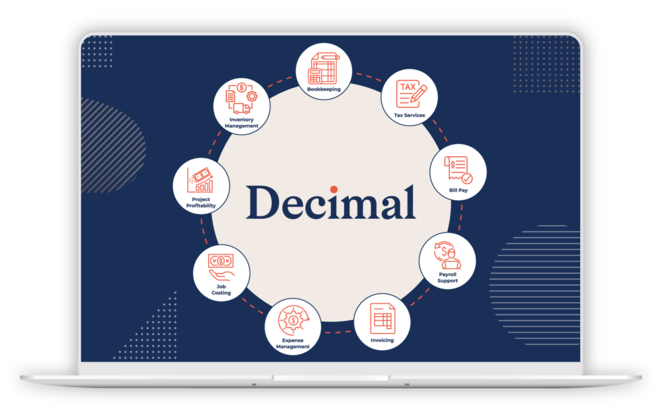Every accountant has heard it: once April 15th passes, things slow down. Supposedly, that’s when you can finally breathe, reorganize, and maybe even take a real vacation. But if you’ve been in practice long enough, you know the “slow season” isn’t as relaxing as it seems. It’s the low point of a feast-or-famine cycle that keeps your firm from hitting its full potential.
Extension returns, client requests, and new opportunities can turn that lull into a period of real growth. Lean into it, and extension season can become your firm’s most profitable time when you use it to set the stage for stronger client relationships and recurring revenue.
The “slow season” myth
Extensions often get treated like an afterthought. Clients often file them because they’re disorganized, missing documents, or juggling too much, and it's not uncommon for accountants to rush through the work just to get it off the desk.
But when firms treat extensions as low priority, they miss the chance to do their most valuable work during what most accountants see as the “slow season”: planning and advisory. The clients who file extensions are often the ones who need you most.
Instead of using the slower months for deeper planning conversations with clients, firms often end up locked in a feast-and-famine cycle: overworked in spring, scrambling in October, and underutilized in between.
It’s not sustainable, and it leaves revenue on the table. Here’s how leveraging the extension season lull can shift that cycle.
Why extension clients are a gold mine
Look closer at your extension clients, and you’ll notice a pattern. Many of them have complicated financial lives—they’re business owners, investors, or high-net-worth individuals. These aren’t problem clients; they’re opportunity clients.
Extensions buy time, and that time is valuable. It gives you the breathing room to have meaningful tax planning conversations, review entity structures, or guide long-term strategies. That kind of work doesn’t just support compliance. It delivers clarity, confidence, and growth.
And here’s the kicker: the clients who lean on you for advisory support during extension season are also the ones who stick around longer and generate more lifetime value for your firm.
When you approach extension clients with advisory care, they transform from one-off projects into year-round partners. Offering Client Advisory Services (CAS) presents the best opportunity to stabilize your workload year-round with fewer ups and downs. That’s a goldmine for any accounting firm.
How to maximize extension season
Instead of seeing October as a barrier to overcome, think of it as a springboard. This is your chance to turn basic, transactional work into insightful, strategic planning and set your firm up for steadier growth with CAS, more structured processes, and a toolkit built to centralize it all.
- 1. Sell year-round advisory
Tax season doesn’t have to be your only busy season. Use tax prep as the perfect doorway into bigger conversations, like cash flow planning, forecasting, budgeting, and proactive tax strategy. Clients are already leaning on you for guidance, so show them how you can support them year-round. When you position your firm as a long-term partner, not just a once-a-year service, you turn slow months into steady, profitable engagements.
Over time, these advisory relationships deepen trust, create more predictable revenue, and make your firm indispensable to your clients’ financial success.
- 2. Give every process structure
Extension season can feel like a tangle of deadlines, docs, and competing priorities. The best way to manage it? Optimize your workflows with clear, repeatable steps. With the right systems in place, projects stay organized, deadlines don’t slip, and the work becomes predictable instead of stressful.
You’ll reduce last-minute scrambling and give your team the confidence to handle even the busiest periods. Plus, those same workflows lay the groundwork for a smoother, more efficient tax season next year to help your firm stay proactive, not reactive, no matter what comes up.
- 3. Revisit your toolkit
Juggling new services and extension filings can quickly become overwhelming without the right tools behind you. A strong practice management platform makes it easier to stay organized, in control, and keep projects moving on schedule. The right system helps you:
- Stay on top of deadlines and due dates
- Assign tasks to staff and monitor progress in real time
- Balance workloads to prevent burnout and underutilization
- Automate reminders so clients deliver what you need, when you need it
Beyond just keeping projects on track, the right platform can really transform how your firm operates. It gives you visibility into every client and task, streamlines and logs every client communication, and frees your team to focus on higher-value work like advisory services. With this kind of technology, what once felt chaotic becomes predictable, scalable, and even profitable.
At the end of the day, what sets thriving firms apart is how they turn tax prep into year-round advisory, keep extension season under control with clear workflows, and lean on the right tools to make it all run smoothly.
From reactive to proactive: turn October into opportunity
The firms that win in October treat it as the opening chapter of a new tax year. Starting important advisory and planning conversations now can reshape how your clients approach 2026 and beyond.
Shifting from reactive to proactive means giving clients more than completed returns and cementing your place as a trusted financial partner. With planning and advisory support, you give them foresight, strategy, and confidence. And for your firm, it means consistent work, higher-value engagements, and growth without burnout.
Accounting project management software makes this shift effortless. With deadline tracking, task automation, project templates, and customizable workflows, your team avoids last-minute stress. Extension season becomes a launchpad for advisory, stronger client relationships, and a steadier workload all year long.
Yes, the “slow season” is a myth. But a smarter season—one where extensions turn into lasting opportunities, advisory revenue grows, and projects run smoothly—is absolutely real. And it starts the moment you stop treating October as an afterthought.
Sponsored Content: This article is generously brought to you by one of our valued sponsors. Their support enables us to continue delivering expert insights and the latest industry trends to our dedicated community of accounting professionals.
.png?width=150&height=63&name=TWRlogo-regmark_blueblack%20(1).png)
.png)










Do you have questions about this article? Email us and let us know > info@woodard.com
Comments: